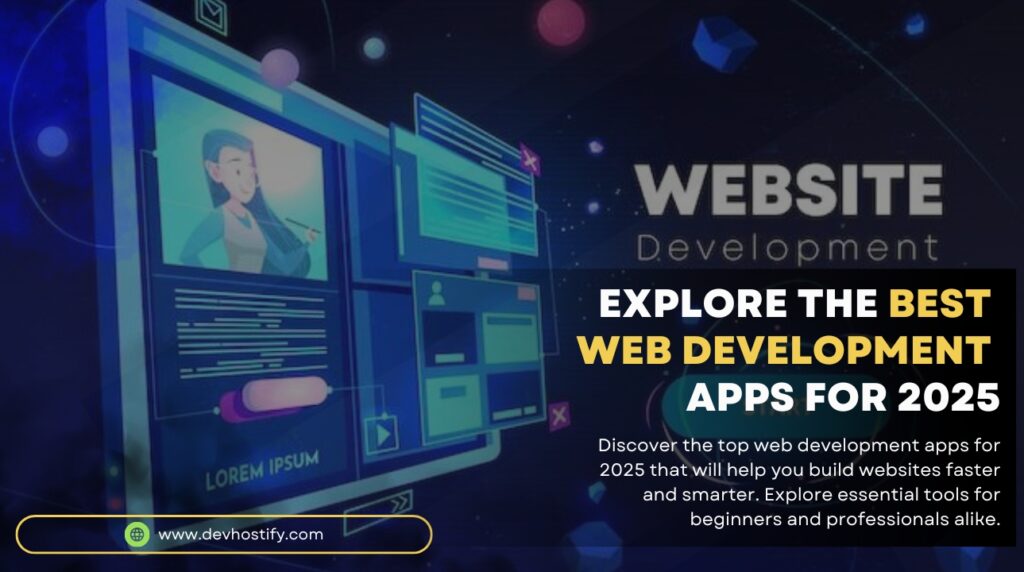What Is CSS? A Beginner’s Guide to Web Design
Home About us Services Digital Marketing Graphic Designing Web Developement Hostinger services Blogs Contact us Home About us Services Digital Marketing Graphic Designing Web Developement Hostinger services Blogs Contact us Get Started What Is CSS? A Beginner’s Guide to Web Design Curious about CSS? This beginner-friendly guide breaks down What Is CSS?, why it’s important in web design, and how to start using it today. Table Content What Is CSS? Why CSS Is Important in Web Design CSS Syntax and How It Works Basic Structure of CSS How Browsers Interpret CSS Types of CSS Inline CSS Internal CSS External CSS Essential CSS Properties for Beginners Text and Font Styling Box Model CSS Positioning Responsive Design with CSS Recommended: Web Development – Why Choose Us Conclusion What Is CSS? CSS (Cascading Style Sheets) is a language used to style and layout web pages. While HTML provides the structure, CSS is what makes a website look polished, colorful, and user-friendly. Whether you’re changing text colors, adjusting spacing, or creating responsive layouts, CSS is your go-to tool for web design aesthetics. Without CSS, all websites would look like plain text on a white background. If you’re starting your journey into web development, understanding CSS is one of the most essential steps you can take. Why CSS Is Important in Web Design CSS plays a vital role in separating content from presentation. This separation brings multiple benefits to both developers and end-users. Benefits of Using CSS 1. Improved Design Control CSS gives you granular control over layout, typography, colors, and more. 2. Consistency Across Pages With CSS, you can apply the same styles to multiple pages from one stylesheet. 3. Faster Page Loading External CSS files reduce code repetition, improving loading times and performance. 4. Easier Maintenance Updating styles across a website becomes simple when using a centralized CSS file. In summary, CSS helps you create professional, accessible, and visually appealing websites. CSS Syntax and How It Works CSS Syntax and How It Works Understanding CSS syntax is crucial for effective styling. Basic Structure of CSS Selector { Property: value; } For example: H1 Color: blue; Font-size: 24px; How Browsers Interpret CSS Browsers read your CSS and apply styles to HTML elements accordingly. When multiple rules apply, the cascading nature of CSS determines which rule takes priority. Key Concepts Specificity: More specific rules override general ones. Inheritance: Some styles automatically pass to child elements. Order of appearance: Later rules can override earlier ones if they target the same element. Types of CSS There are three main types of CSS, each with its use cases. Inline CSS This involves adding CSS directly inside HTML tags using the style attribute. Example: <p style=”color:red;”>This is red text.</p> Use Case: Quick changes or dynamic styles with JavaScript. Internal CSS Defined within a <style> tag in the <head> section of your HTML document. Example: <style> Body {Background-color: lightgray;} </style> Use Case: Styling a single page. External CSS CSS is written in a separate .css file and linked using the <link> tag. Example: <link rel=”stylesheet” href=”styles.css”> Use Case: Best for multi-page websites due to reusability. Essential CSS Properties for Beginners Here are key CSS properties every beginner should learn. Text and Font Styling Common Properties: Color Font-size Font-family Text-align Example: P { Color: #333; Font-size: 16px; Font-family: Arial, sans-serif; Text-align: justify; } Box Model Every HTML element is a box comprising: Content Padding Border Margin Example: Div { Padding: 10px; Border: 1px solid #000; Margin: 15px; } CSS Positioning CSS allows you to place elements exactly where you want them. Position Types: Static Relative Absolute Fixed Sticky Responsive Design with CSS Modern websites must look great on all devices. Responsive design ensures your layout adapts to different screen sizes. Tools for Responsive Design 1. Media Queries @media (max-width: 768px) { Body { Font-size: 14px; } 2. Flexible Units Use %, em, rem, vw, and vh instead of fixed pixels. 3. CSS Grid and Flexbox Layout systems that adapt gracefully to screen changes. Responsive design with CSS is essential in delivering a great user experience across desktops, tablets, and mobile devices. Recommended: Web Development – Why Choose Us Starting your journey in web development? Here’s why you should consider learning with us: 1. Beginner-Friendly Approach We explain every CSS concept in simple terms, perfect for those with zero experience. 2. Hands-On Projects Our tutorials and courses are packed with practical examples, helping you apply what you learn. 3. Up-to-Date Content CSS evolves, and so do we. Stay current with modern best practices. 4. Supportive Community Join our forum and connect with other CSS learners, developers, and mentors. Explore our Free Web Development Course to kick-start your CSS learning journey today! Conclusion CSS is a fundamental skill for anyone looking to enter the world of web development. It allows you to transform plain HTML into visually engaging web pages. From text styling and layout control to responsive design, CSS opens up endless possibilities. By understanding CSS basics and practicing regularly, you’ll be on your way to building professional-looking websites in no time. Recent posts Let us build the bridge between your Brand and customer We focus on understanding your audience, telling your story with clarity, and delivering value through every click and interaction. Whether it’s a sleek website, strong social media presence, or powerful branding — we ensure your message reaches the right people in the most impactful way. Ger Started DevHostiy From Localhost to Designed for developers, optimized for performance. From fast deployments to rock-solid uptime, we power your code with confidence. Let’s build something great — together.scale Services Digital Marketing Graphic Desining Web Developement Hostinger Contact us +92 325 7058601 mdaniyalarain70@gmail.com Facebook Twitter Youtube © 2025 DevHostify. All rights reserved.










